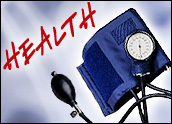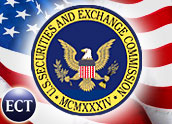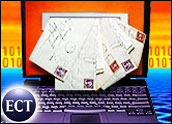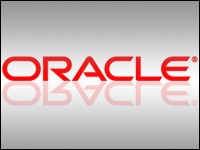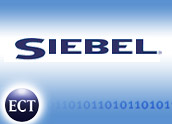
In 1997, Keith Raffel founded UpShot Corporation, the first company to offer Web-based, hosted sales-force automation and CRM. UpShot launched its initial product two years later. By 2003 its products included UpShot for small and midsize businesses and UpShot XE for larger organizations.
As UpShot was considering growth strategies — private financing, a public offering, or a merger — talks began with Siebel. Raffel and then Siebel CEO Tom Siebel hit it off and shared a common vision of combining hosted and on-premises CRM.
Siebel completed the acquisition last November. UpShot shareholders got a cash transaction valued at about US$70 million, and Siebel got UpShot’s technology and about 1,000 customers.
Today Raffel found himself in charge of Siebel OnDemand. In this exclusive interview with Raffel, now vice president of Siebel CRM OnDemand, he told CRM Buyer about how OnDemand evolved, how the company is positioning the solution for the marketplace, and how OnDemand has become a critical part of the company’s direction.
CRM Buyer: What is Siebel’s OnDemand initiative, and how does it fit with Siebel’s overall strategy?
Keith Raffel: Siebel OnDemand was already in the works internally at Siebel. Siebel disclosed its entry into this market in October 2003, almost simultaneously with its announcement to purchase UpShot.
UpShot had an experienced cadre of employees in product marketing, sales, and engineering, who were experienced with the “on-demand” world. The idea of combining the inventor of CRM with the inventor of hosted CRM was very appealing. So Tom Siebel and I pulled that together.
On the product side, UpShot was a mature, full-featured product, whereas Siebel was not as mature at the time. It was as if we had a fabulous car, but it had been stripped down. The chassis and engine were great, but now we had to build everything else around that.
So UpShot provided the features and talented engineers, while Siebel provided the infrastructure, the user interface, and built-in analytics. By combining OnDemand with the features in UpShot, we had a winning product for this market. What we did was more or less take the better of the two and create a “greatest hits” album. This allowed Siebel to turbocharge its whole effort, enter the market more aggressively and come out with a mature product faster.
Siebel says it has 175 customers using OnDemand. What verticals are they in?
Raffel: Already, 85 percent of what Siebel sells today is sold in industry-specific editions. We are going to bring that same expertise to OnDemand starting at the end of the summer. We’re seeing a whole array of interest in OnDemand from financial services, life sciences, insurance, high tech, manufacturing, and more.
We have 23 industry-specific editions of Siebel 7 and think before long you will see a similar number of CRM OnDemand editions. What we are trying to do is take the expertise that we have in Siebel 7 and bring it into the OnDemand world.
One of the things that’s been gratifying is that in the past, there’s been a tendency to look at an OnDemand-like product as particularly aimed at small and medium businesses, and it’s certainly a good solution there. But we’re seeing Fortune 500 and Global 2000 companies embracing the OnDemand model. Some of these companies are already using Siebel 7, and some are green-field opportunities.
Could you name some of these companies?
Raffel: Companies using OnDemand today include Galileo International, which is sort of the SABER of Europe; Boise Cascade, a well know forest and paper company; Haworth, a billion-dollar company making office furniture; Northwestern Mutual Insurance; and Baxter Healthcare.
How are these companies using OnDemand?
Raffel: Galileo connects to about 46,000 travel agency locations, almost 700 airlines, a couple of dozen car rental companies, over 50,000 hotels, and so on. The way they are using CRM OnDemand is to coordinate the efforts with the sales, marketing, and service among all these firms across Europe and Asia. They are seeing an increase in their prospects by 20 percent over a 12-month period, and they are looking at saving 50 percent of their company’s annual marketing budget.
Describe overall your customers’ OnDemand experience.
Raffel: Let me give you a familiar analogy. When you go out to a pond and see a swan floating serenely around the pond, it looks graceful and elegant. But under the water, its feet are pedaling like mad.
I think OnDemand is the same. It’s not simplistic. It’s not unsophisticated. But to the user, it looks graceful and elegant and extremely easy to use. That’s because we are looking at what the user wants and exposing only those parts that they need to do their job — and do it fast and efficiently. What users experience is an affordable solution focused on being fast and easy to understand.
At only $70 per month per user, companies see that it’s low risk in going with an OnDemand solution. So it’s not much more than a Starbucks latte per user per day for a company to keep its employees efficient and effective.
We are certainly very much in the growth phase with OnDemand. Currently, we do have some tire-kickers because one of the things that we offer is a thirty-day free trial. We have hundreds, if not thousands of companies in all kinds of areas that are taking advantage of that right now.
Explain how OnDemand can be part of a “hybrid” solution. What companies are using this type of solution and why?
Raffel: I have yet to talk to a current Siebel customer who can’t see a way to extend CRM within their company by using OnDemand. It could be that they have overseas subsidiaries without IT people. Or that they’ve just purchased a company and need to get it up and running and integrated with the parent company’s customer-relationship-management strategy. They may have users in product marketing, finance, service, and other areas who haven’t been using on-premises Siebel.
CRM OnDemand was designed from the bottom up as an on-demand service. At the same time, Siebel was able to take advantage of what it learned over the past 10 years about CRM requirements, business rules, and what metadata should look like for a CRM solution — and incorporate all of this into OnDemand. Because we use the same business rules and metadata, it’s easy for CRM OnDemand and our on-premises software to work with each other. Now instead of CRM being a point solution within a company, OnDemand can work with Siebel 7 so that managers and executives can see what’s going on across the company at any given instant.
Oftentimes we talk to companies that just have a couple of hundred users. They don’t want to try setting up the application within IT and also get approval for the expense — so they go with OnDemand because it’s a quicker, better, faster way to deal with their problem.
We are just rolling out hybrid solutions right now, unfortunately, we can’t say where just yet.
How long does it generally take one of your customers to get up and running?
Raffel: How long it takes to get them up and running really depends. Theoretically, you can be up and running almost instantly. In fact, CRM OnDemand works best when you configure it the way you run your business. So working with us, getting some training, and learning best practices in your specific industry helps you get things set up the right way from the beginning.
If you are a Siebel customer already and want to run out a couple of hundred seats, it might take four to six weeks. If you’re a new customer and don’t have to worry about integration, it can be as fast as three weeks.
I just met with a Siebel customer two days ago. [Its] vice president of sales was thinking about putting a request to IT to make changes to the on-premises Siebel so that he could add a field called “competitor.” He was interested in seeing whether CRM OnDemand could handle the change fast. We showed him that we could roll the change out with a pick list in about five minutes. He was pretty impressed.
What have Siebel’s experiences been as it moves into the SMB market?
Raffel: The thing about the SMB market is that too often, people look at it and say, “all they need is a toy.” Or [they] assume that because [the company] only has 20 salespeople, they don’t need much.
But a VP of sales running a 20-person sales organization is running an enterprise. He has specific ways of running the business, and specific elements in his sales cycle that are unique to his company, he wants flexibility in order to adapt to all these things, and that’s what CRM OnDemand delivers. He can configure quickly, but at the same time [he doesn’t get] a generic solution. And I think that this is one of the reasons we are getting traction in this market.
For the SMB market, OnDemand is like the old Greyhound Bus commercial: “Leave the driving to us.” So if you know what CRM can bring you but don’t want to worry about buying software, about buying servers, about paying IT people to administer a data center, then you can leave all that to Siebel and IBM. IBM will do the hosting, and Siebel will provide the OnDemand solution up and running even faster than the three weeks I mentioned earlier.
What do you think is the key to the SMB market?
Raffel: The key to this market is that when things are rolled out, they should be rolled out correctly. A small- to mid-size company might call up and say, “Get me CRM OnDemand up and running tomorrow.” But we work with them to show them that this process takes a little bit of thinking before we roll something out. Otherwise, the sales people won’t see the value in CRM for them and instead will look at it as a tool for executives to track what they’re doing.
We want to make sure that we are treating relatively small companies, those with sales teams of 20 to 40, as if they are an enterprise and make sure they have a successful rollout. The salespeople need to know the best way to configure it, the best way to use it, and how to use it to increase sales, improve service and lower the cost of marketing.
How is OnDemand doing vis–vis other hosted applications?
Raffel: I think we see salesforce.com focused much more on the lower end of the market. According to their S1, their average implementation is 14 seats. We see them out there and are competing with them, but we feel we’re doing pretty well. What OnDemand has done for Siebel is open up a whole new market and, at the same time, serve our enterprise customers even better.
It’s hard to say exactly how much of the 23 percent of the $1.4 billion that goes into R&D goes into OnDemand because, in terms of metadata, business rules, and verticals, the same people are working on both.
What’s coming in the future for OnDemand?
Raffel: By the end of the summer, we will have verticals for high-tech, life sciences, insurance, and auto. Then we will have four more in the winter.
OnDemand is almost like recombinant DNA. What’s happening now is that the OnDemand model is being infused into Siebel’s very DNA. It’s no longer just an alternative. It’s part and parcel of what we offer. It’s not an extra. It’s a critical part of Siebel’s solutions for its current customers and its potential customers.





